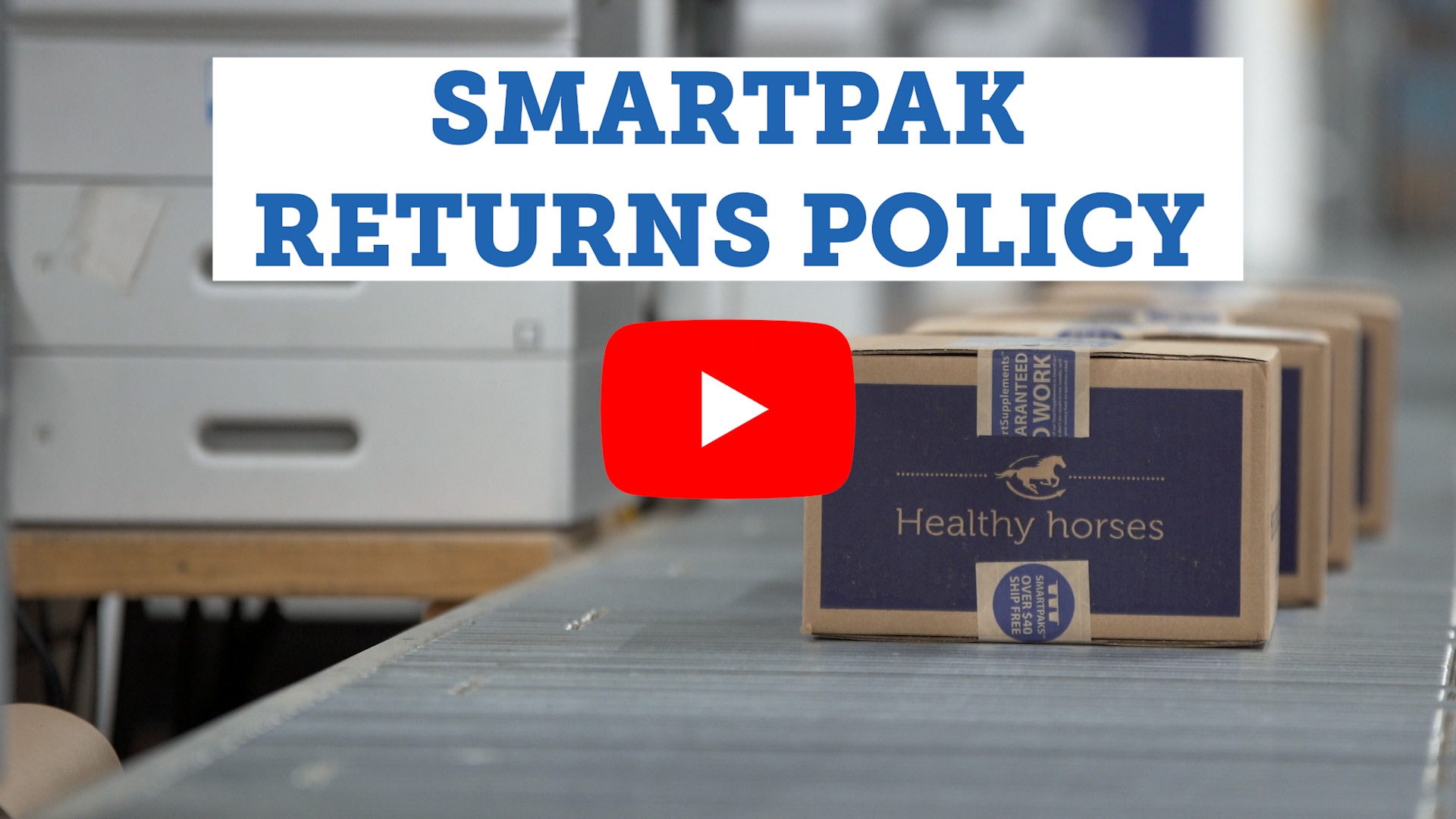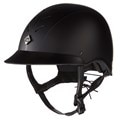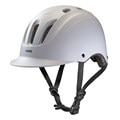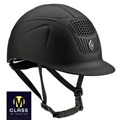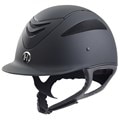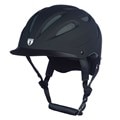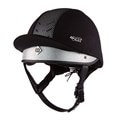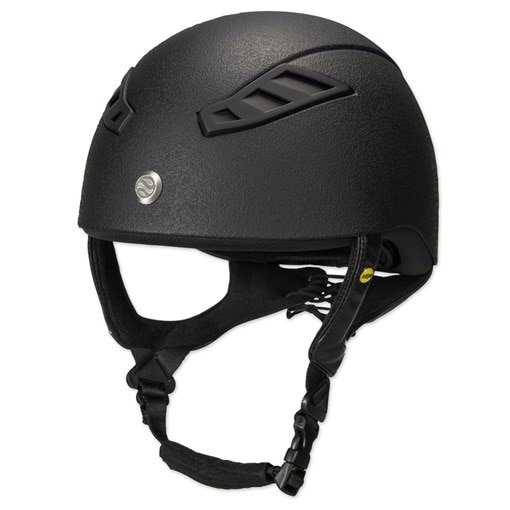
Trauma Void
(#34438)
Trauma Void EQ3 Lynx Eventing Helmet
Our Price:
List Price:
Our Price: Our Price: Sale Price: : $ (%) :
Member Price:
(Members save 5% at SmartPak)
Our Price: Our Price: Sale Price: : $ (%) :
Member Price:
(Members save 5% at SmartPak)
:
SmartPerks Price:
(Because you have supplements on AutoShip, you save an extra 10% on this and all other SmartPak tack & apparel items!)
Your Price:
(You save 5% as a member of . And, because you have supplements on AutoShip, you save an extra 10% on this and all other SmartPak tack & apparel items!)
SmartPerks Price:
(Because you have supplements on AutoShip, you can save an extra 10% on this and all other SmartPak tack & apparel items! Enter promo code PERKS at checkout.)
Your Price:
(You save 5% as a member of . Because you have supplements on AutoShip, you can save an extra 10% on this and all other SmartPak tack & apparel items! Enter promo code PERKS at checkout.)
SmartPerks Price:
(Because you have supplements on AutoShip, you save an extra 10% on this and all other SmartPak tack & apparel items!)
Your Price:
(You save 5% as a member of . And, because you have supplements on AutoShip, you save an extra 10% on this and all other SmartPak tack & apparel items!)
SmartPerks Price:
(Because you have supplements on AutoShip, you can save an extra 10% on this and all other SmartPak tack & apparel items! Enter promo code PERKS at checkout.)
Your Price:
(You save 5% as a member of . Because you have supplements on AutoShip, you can save an extra 10% on this and all other SmartPak tack & apparel items! Enter promo code PERKS at checkout.)
![]() Putting your horse's supplements on AutoShip helps you take great care of your horse, so we take great care of you with SmartPerks! When you order your horse's supplements on AutoShip, you're automatically* eligible for our FREE SmartPerks benefits, including:
Putting your horse's supplements on AutoShip helps you take great care of your horse, so we take great care of you with SmartPerks! When you order your horse's supplements on AutoShip, you're automatically* eligible for our FREE SmartPerks benefits, including:
- Free shipping every day
- 10% off all SmartPak brand tack, apparel, and gear
*At least one individual AutoShip supplement or horse's SmartPaks must be over $40. Some exclusions apply. Visit SmartPak.com/SmartPerks or call 1-800-461-8898 for details.
Overview
Why We Love This
Trauma Void EQ3 Lynx Eventing Helmet has double ventilation to keep the rider comfortable even in the toughest situations. The ventilation holes are lined with nets to prevent branches or the like from entering the helmet. The matte glossy surface makes it easy to keep your helmet clean and fresh. The liner (inner lining) is removable and has our Coolmax® technology for breathing and transporting moisture away. The lining can be easily washed clean with lukewarm water. The helmet is designed without any protruding shapes so as not to get stuck in case of an accident. Optimal for field riders, eventers, and jockeys.
Imported.
CAUTION: Safety equipment must fit properly and be appropriately secured with manufacture approved parts only. Altering or adding to safety equipment voids warranty and can result in injury. As a safety precaution, inspect all products prior to each use.
For additional information on fit, watch our video on how to fit your helmet. Click Here!
Mips stands for Multi-directional Impact Protection System. The system is built into the helmet, designed to protect the brain by reducing the harmful forces in case of falls from a horse.
How does Mips work?
Mips act as an extra shell inside the helmet and allow the helmet to rotate in all directions without affecting the head. But in other words, the helmet takes care of the rotational forces in the event of a fall from the horse, not your head. Therefore, it goes without saying that our riding helmets should be equipped with Mips® safety system.
Why do I need Mips?
If you fall from a height or fall, you are more likely to hit your head obliquely from the side than to land straight on your head. Oblique impact creates a rotational movement to which the brain is very sensitive. At best, in the event of a hard blow, you'll be fine with a minor concussion. If you're really unlucky, your brain tissue could be damaged.
How are our riding helmets tested?
Our riding helmets are tested in two versions; one with and one without Mips. To be approved, helmets need to reduce rotational forces by at least 10%. In most cases, our helmets significantly exceed this limit. Helmets are impact tested on the forehead, from the side, from the top, and the side from the front. The tests take place on all models and sizes, and are documented both via sensors and high-speed cameras. Back on Track Helmets have won numerous BEST IN TEST AWARDS.
Imported.
CAUTION: Safety equipment must fit properly and be appropriately secured with manufacture approved parts only. Altering or adding to safety equipment voids warranty and can result in injury. As a safety precaution, inspect all products prior to each use.
For additional information on fit, watch our video on how to fit your helmet. Click Here!
Mips stands for Multi-directional Impact Protection System. The system is built into the helmet, designed to protect the brain by reducing the harmful forces in case of falls from a horse.
How does Mips work?
Mips act as an extra shell inside the helmet and allow the helmet to rotate in all directions without affecting the head. But in other words, the helmet takes care of the rotational forces in the event of a fall from the horse, not your head. Therefore, it goes without saying that our riding helmets should be equipped with Mips® safety system.
Why do I need Mips?
If you fall from a height or fall, you are more likely to hit your head obliquely from the side than to land straight on your head. Oblique impact creates a rotational movement to which the brain is very sensitive. At best, in the event of a hard blow, you'll be fine with a minor concussion. If you're really unlucky, your brain tissue could be damaged.
How are our riding helmets tested?
Our riding helmets are tested in two versions; one with and one without Mips. To be approved, helmets need to reduce rotational forces by at least 10%. In most cases, our helmets significantly exceed this limit. Helmets are impact tested on the forehead, from the side, from the top, and the side from the front. The tests take place on all models and sizes, and are documented both via sensors and high-speed cameras. Back on Track Helmets have won numerous BEST IN TEST AWARDS.
- Stylish
- MIPS Technology
- COOL MAX Technology
- Vented MIPS security system,
- Front and rear ventilation
- Washable function lining,
- Certified by SEI (Safety Equipment Institute), MIPS, COOL MAX, Brain Protection System
Key Specifications
- MIPS: Yes
- VG1: Yes
Ingredients
(Maintenance Dose = )
| Ingredient | Amount |
Sizing
These tend to run small we recommend rounding up to the nearest cm and then go up one size.
To measure your head for the best fit, use a tape measure in centimeters. Place the tape measure ½ - 1 inch above the eyebrows (it should skim the tops of the ears), and take it round to the fullest part of the head. This is the circumference of your head in centimeters, and you should choose a helmet size that is in this range.
Firmness and tightness can feel similar when wearing your helmet, so take notice to the difference. When wearing the helmet, the brim should be about ½ - 1 inch above your eyebrows and level across. You should feel a firm, even pressure around the circumference of your head. No gap should exist between your helmet and head.
55cm=6 3/4
56cm=6 7/8
57cm=7
58cm=7 1/8
59cm=7 1/4
60cm-=7 3/8
To measure your head for the best fit, use a tape measure in centimeters. Place the tape measure ½ - 1 inch above the eyebrows (it should skim the tops of the ears), and take it round to the fullest part of the head. This is the circumference of your head in centimeters, and you should choose a helmet size that is in this range.
Firmness and tightness can feel similar when wearing your helmet, so take notice to the difference. When wearing the helmet, the brim should be about ½ - 1 inch above your eyebrows and level across. You should feel a firm, even pressure around the circumference of your head. No gap should exist between your helmet and head.
55cm=6 3/4
56cm=6 7/8
57cm=7
58cm=7 1/8
59cm=7 1/4
60cm-=7 3/8
Specifications
| MIPS | Yes |
| VG1 | Yes |
Reviews
Trauma Void EQ3 Lynx Eventing Helmet is rated
out of
5 by
1.
Rated 5 out of
5
by
Katiesteph from
Pleasantly surprised! It fit like a glove!
I was honestly pretty nervous about ordering this helmet without trying it on first, especially since my head tends to be VERY picky when it comes to helmets ( spent 2 hours in my local tack shop one day trying on every helmet in the store and maybe 2 actually fit my head....). BUT I am ecstatic to report that this fit LIKE A GLOVE!!! I followed the directions of ordering a size up and it worked out perfectly! I am so relieved and excited to ride in it now. The risk was worth it! For reference, the only other helmets that I currently fit in comfortably are the GPA First Lady and Uvex Suxxeed.
Date published: 2023-08-11
Q & A


